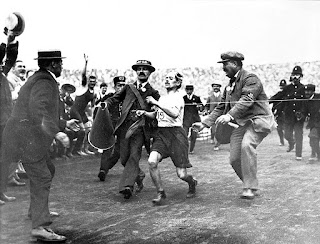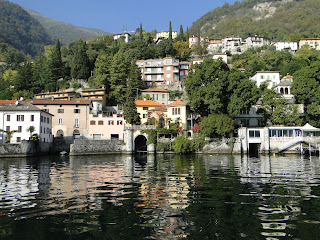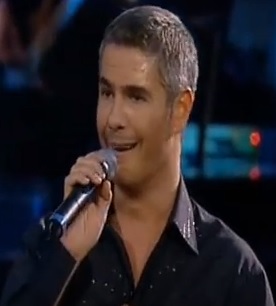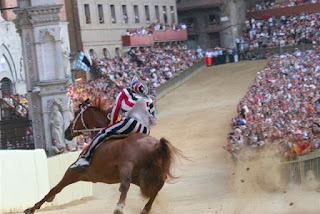Career scarred by petty jealousies
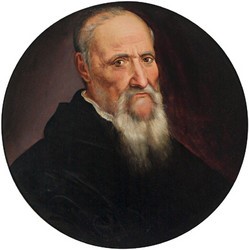 |
| Bartolommeo Bandinelli - a self-portrait |
The sculptor Bartolommeo Bandinelli, a contemporary and
rival of Michelangelo and Benvenuto Cellini in Renaissance Italy, was born on
this day in 1473 in Florence.
He left his mark on Florence in the shape of the monumental
statue of Hercules and Cacus in the Piazza della Signoria and his statues of
Adam and Eve, originally created for the Duomo but today housed in the Museo
Nazionale del Bargello.
Also known as Baccio Bandinelli and Bartolommeo Brandini, he
was skilled in small sculptures but became known and disliked for his
antagonistic manner with other artists and his particular hatred of Michelangelo,
of whom he was bitterly jealous.
Giorgio Vasari, the artist and sculptor who was the first to
compile a written history of art and artists, and who was a student in Bandinelli’s
workshop, recalled an occasion when Bandinelli was so enraged by the excitement
that ensued when a Michelangelo drawing was uncovered in the Palazzo Vecchio
that, as soon as an opportunity arose, he tore it up.
Where Michelangelo was revered for everything he did,
Bandinelli’s critics said he lacked the skills required to tackle large
sculptures.
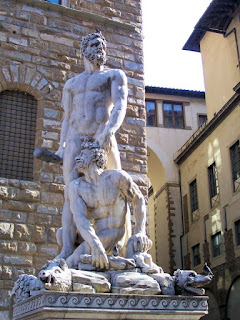 |
| Bandinelli's Hercules and Cacus |
This only drove him to want to prove them wrong, and to this
end it is thought that he persuaded the ruling Medici family to give him the
commission for the statue of Hercules and Cacus – originally intended for
Michelangelo, who was busy working on the Medici Chapel.
Yet when the work was unveiled in 1534 it attracted
ridicule, in particular from Cellini.
Where Michelangelo, whose David already stood in the Piazza, had a gift
for imbuing his creations with a sense of realism and drama, Bandinelli’s
figures - in the eyes of his critics at least – lacked character and authenticity.
Much more favourably received were his bronze copy of the
ancient Greek statue Laocoon and his Sons, his tombs of the Medici popes Leo X
and Clement VII in Rome and his Monument to Giovanni delle Bande Nere, the
Medici condottiero (professional soldier).
Bandinelli was the son of a prominent Florentine goldsmith. As
a boy, he was apprenticed under Giovanni Francesco Rustici, a sculptor friend
of Leonardo da Vinci.
Later in his career, he was a leader in the group of
Florentine Mannerists who were inspired by the revived interest in Donatello.
Some of his works in terracotta were hailed as masterpieces
and some of his drawings have been difficult to establish as not being by
Michelangelo.
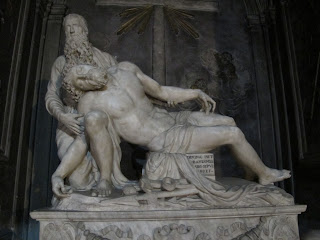 |
| Bandinelli's Pietà in the Basilica della Santissima Annunziata |
Yet he continued to attract scorn whenever he took on a
large project, his Pietà in the Basilica della Santissima Annunziata being
another example. Bandinelli began work
on it only after he heard about Michelangelo’s similar commission in Rome.
It was completed in 1559 and again brought unfavourable
comments from other artists, some of whom said that it lacked refinement, his
figures appearing somewhat awkward and oddly positioned compared with the grace and
beauty of Michelangelo’s work.
The other complaint against Bandinelli, voiced by Vasari,
was that he accepted commissions too hastily and failed to complete many of
them, although there are enough examples of his work in museums and galleries
to refute that claim.
However, Vasari’s detailed Lives of the Artists also gives
praise where it was due and acknowledges Bandinelli was a sculptor of merit, and
in recent years his talent has been better appreciated, culminating in the
first exhibition devoted to his work alone, in the Bargello museum in Florence.
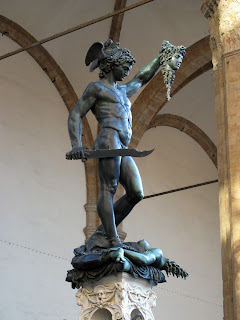 |
| Cellini's Perseus with the Head of Medusa |
Travel tip:
Florence’s Piazza della Signoria, situated right in the
heart of the city, close to the Duomo and the Uffizi Gallery, is an open-air
museum of Renaissance art, featuring a series of important sculptures, the most
famous of which are Giambologna’s The Rape of the Sabine Women and his
Equestrian Monument of Cosimo I, Cellini’s Perseus with the Head of Medusa
(next to The Rape of the Sabine Women in the Loggia dei Lanzi), Bandinelli’s
Hercules and Cacus, the Medici Lions by Fancelli and Vacca, The Fountain of
Neptune by Bartolemeo Ammannati, copes of Donatello’s Judith and Holofernes and
Il Marzocco (the Lion), and the copy of Michelangelo’s David, at the entrance to
the Palazzo Vecchio.
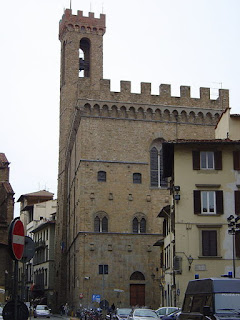 |
| The Bargello in Via del Proconsolo |
Travel tip:
More Renaissance sculptures can be appreciated in the Museo Nazionale del Bargello - the Bargello National Museum - situated just a short distance from Piazza della
Signoria in Via del Proconsolo, in a fortified 13th century building
that was once a prison. The museum houses masterpieces by Michelangelo, Donatello,
Cellini, Giambologna, Vincenzo Gemito, Jacopo Sansovino, Gianlorenzo Bernini
and many works by the Della Robbia family.


